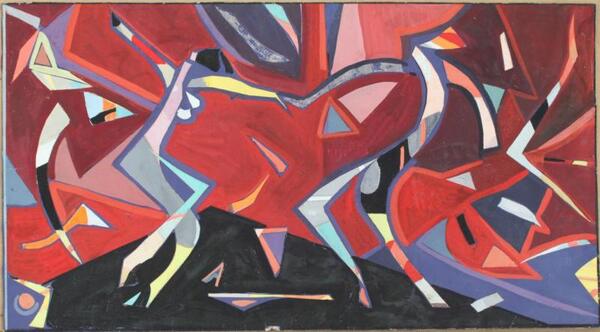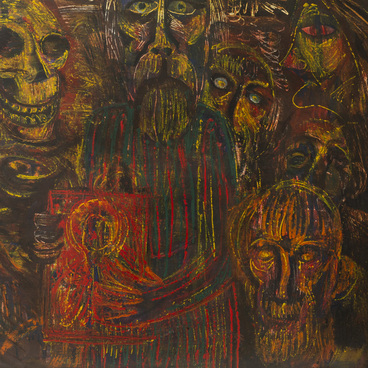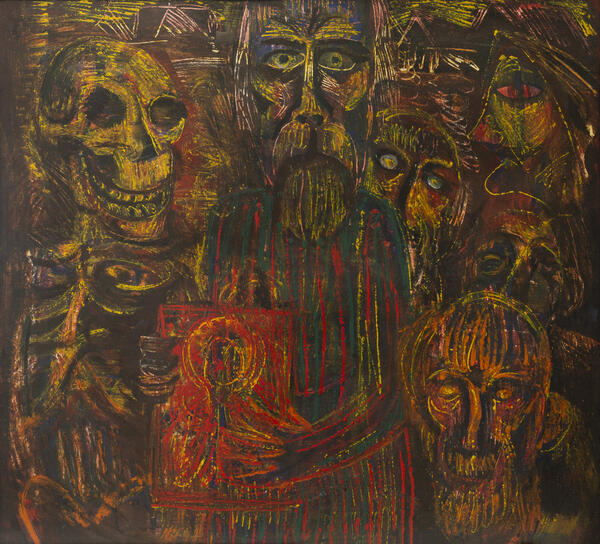The artistic legacy of Nikolay Vasilyevich Shuvalov (1929–1984) includes more than 1,000 works that are kept in museums and private collections. The literary critic Igor Alexandrovich Dedkov noted,
Boogie Woogie. Dance
He carried himself, painted, and spoke more freely than others — even back then, in the sixties — and this attracted many different people to him.
Nikolay Shuvalov was born in Kostroma and lived there all his life. He studied at the Kostroma Art School (1946–1949), the Moscow Institute of Applied and Decorative Arts (1949–1953), and the Leningrad Vera Mukhina Higher School of Art and Design (1954). He taught at the Kostroma Art College (1954–1957) and in 1968 became a member of the Artists’ Union.
In the last years of his studies at the Institute, he began looking for his own artistic language, focusing primarily on the form. Nikolay Shuvalov himself noted,There are artists of many themes that have some kind of obsessive need for everything new, untested — I am probably one of them.
The Kostroma artist and his work were in constant conflict with the ideologists of official art. He had to fight for the opportunity to think and paint in his own way and to argue with militant mediocrity. He entered into open confrontation with the norms and standards that were cultivated by the official Artists’ Union.
His colleagues accused him of rebellion and insanity. Such was the atmosphere of the 1950s, when Shuvalov, not willing to compromise, had to defend his point of view. It is no coincidence that he became an unofficial leader, an epitome of honesty and loyalty to the ideals of art for a whole generation of young Kostroma artists.
The graphic composition “Boogie Woogie. Dance” was created in the 1950s. The artist uses grotesque and expressive stylization. In this work, Nikolay Shuvalov focused on the stilyagi, or style hunters, — members of a youth counterculture that spread in major cities of the USSR from the second half of the 1940s.
This subculture was a kind of spontaneous protest against the imposed stereotypes of behavior. The stilyagi with their interest in Western pop culture became the target of party and Komsomol functionaries. Cartoons and articles in the press not only ridiculed them, but also presented the stilyagi as potential enemies of the Soviet government.




